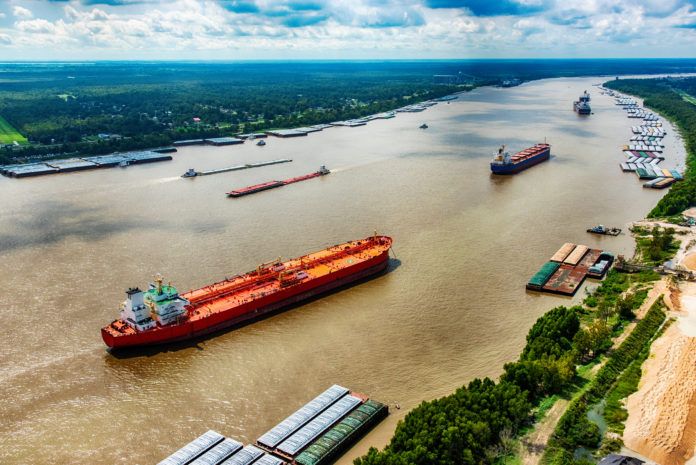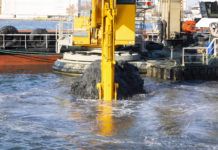Traffic along Louisiana’s waterways is on the rise, a trend that will likely continue in the wake of $1 billion-plus industrial investments, the growing exportation of oil and gas (and soon to be LNG), and severe trucker and pipeline shortages.
Consequently, the waterborne shipping industry is feeling the strain of an overloaded supply chain, and ports are preparing for the eventuality of heightened demand and larger Panamex-style ships by funneling increasing amounts of money into their infrastructures.
The Port of New Orleans is eyeing a second container terminal downriver, free from the confines of its existing facilities, and recently paid $23.4 million for the construction and delivery of new container gantry cranes at its Napoleon Avenue Container Terminal. Greenfield sites are also getting attention, as the Plaquemines Port Harbor & Terminal District is expanding its footprint with the development of a liquid bulk export facility, to be operational by 2020.
It’s true that the maritime industry is often overlooked by most Louisiana residents, despite the fact that more than 30% of all waterborne commerce in the U.S. passes through the lower Mississippi River. Bringing the point home, a recent study by the Offshore Marine Service Association and the Louisiana Association of Waterway Operators and Shipyards found that the state’s water transportation and support services sector contributes to some 83,300 jobs in the state, with total payroll income of $5.5 billion and annual economic output of $20.9 billion.
Piping hot
Part of the strain on shippers arises from a lack of oil and gas pipelines, prompting some owners to barge their crude oil and petroleum products downriver. Eric Smith, associate director of the Tulane Energy Institute in New Orleans, says a grossly inadequate supply of pipelines in the U.S. is the primary reason for the problem, along with sharp increases in petrochemical, crude oil and natural gas production.
That all points to a promising future for pipe suppliers. Adding fuel to the fire, so to speak, will be the next wave of petrochemical and LNG projects, as owners look for ways to shuttle oil and natural gas from the shale plays.
Baton Rouge pipe suppliers Stupp Corp. and Epic Piping are tapping into that demand growth by opening their pocketbooks and funding facility improvements and expansions. A stabilizing market has given them the confidence to make the investment, as they prepare for the impending surge.
Still high stakes
Meanwhile, in the deepwater Gulf of Mexico, technology is lowering the breakeven point for the industry’s big “portfolio players,” a fact reflected in recent increases in rig counts in the latest lease sale in March. The most recent one generated some $244 million in high bids and represents a gradual upward trend since 2017.
In other big news, BP announced a $1.3 billion expansion earlier this year following the discovery of an additional 400 million barrels of oil in the Atlantis field. The company expects the platform to be operational by 2020, adding another 38,000 barrels to the company’s daily production capacity.
Despite offshore’s stabilizing trajectory, the number of players continues to thin, as it will likely remain an expensive proposition. It seems current market dynamics aren’t enticing enough to pull most producers away from the shale plays. The cards are also stacked heavily in favor of the mega producers that can find innovative ways to get more out of their existing Gulf structures.








